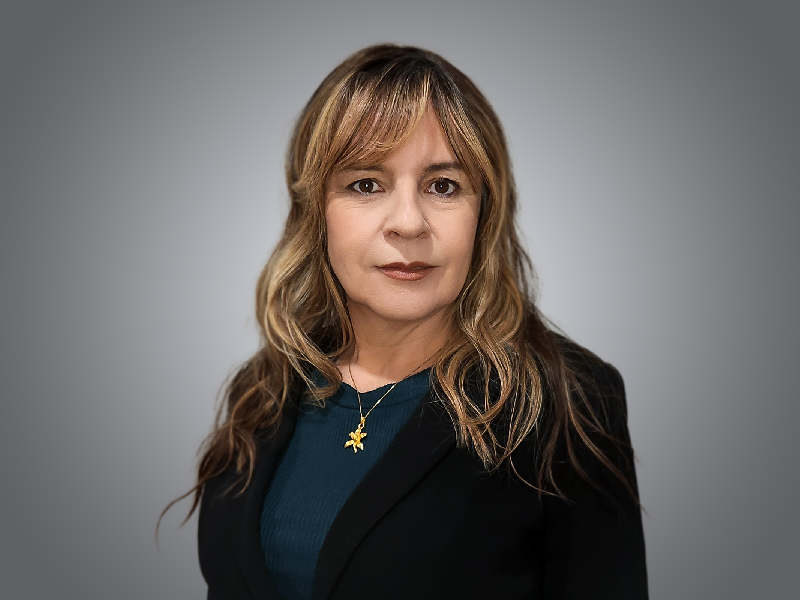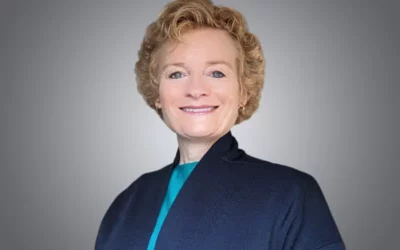The Boulder Fund grant will allow Mass Insight to pilot a new program targeting middle school readiness. May. 22, 2025 –Boston– Mass Insight Education & Research’s President and CEO, Andrea Wolfe, has been selected in the 2025 cohort of Education Leaders of...
Mass Insight’s Lead Networker—Our Conversation with Dr. Carolina Buitrago.
Dr. Carolina Buitrago recently joined Mass Insight to lead our school improvement network initiatives. She is responsible for developing local and national networks of districts and schools to increase college readiness and success for African American/black, Latinx, and low-income students. Mass Insight recently received funding from the Bill & Melinda Gates Foundation to help us build our capacity to facilitate networks. Networks are described by the foundation as “a network of secondary schools working in partnership with an intermediary organization to use a continuous improvement process to significantly increase the number of Black, Latino, and low-income students who earn a high school diploma, enroll in a postsecondary institution, and are on track in their first year to earn a credential with labor-market value.”
I sat down with Carolina to talk to her about her background and work. What follows is a conversation about how she sees network building, systems thinking, and improvement science fitting in to Mass Insight’s school improvement work. This interview has been edited and condensed.
John Schneider: Please tell us a little bit about yourself and your background.
Carolina Buitrago: I started in the field of education a long time ago as a school-based counselor. I was a counselor for 6th and 7th graders in my native Colombia. And then when I came to the United States, I did a master’s program at the Harvard Ed school and then started working for the Judge Baker Children’s Center providing school-based counseling services in three elementary schools in the Boston Public Schools. I’ve always tried to think in terms of how the system was affecting children. So even when I was doing very micro and focused work with children, I sought to understand what was needed in the classroom setting to support the child, the teacher, and the families.
JS: You have had an interest in how systems work to support children and families. What is it about how systems work that interests you?
CB: My professional trajectory went from a very school-based, micro kind of approach to the policy world with the state department of education doing early childhood policy. And that opened my horizons to the larger spheres of influence that come from the world of policy, the world of funding, and the world of providing programmatic guidelines to school districts and classrooms in particular. Then I did research and data analytics on school improvement and teacher effectiveness, which necessarily leads you to think systemically about what variables are at play in teaching and learning, the school organization and the community at large. So, all of those pieces of my background have over time really resulted in an awareness of the larger ecology that shapes the experiences of children and their families as they learn and develop.
JS: Tell us about your work here at Mass Insight. What are you responsible for?
CB: I am responsible for leading the work funded by the Bill & Melinda Gates Foundation, which has provided us support for formulating and codifying a model for networked improvement.
JS: Mass Insight has facilitated a wide range of school improvement interventions, including a few different types of networks. What makes this work distinctive?
CB: Mass Insight has had prior experience with running networks for the purpose of improvement. But networks of improvement have a very particular methodology, based on the principles of improvement science, that brings people together to capitalize on the power of the collective to solve urgent problems of practice. School teams work collaboratively in partnership with a supporting intermediary organization, like Mass Insight, to use methods to identify, test, and refine solutions that target a problem. In our case, we want to focus on college readiness and access to advanced academics for youth that are low-income, African American/black, and Latinx, and who haven’t had as much access to advanced academics. This is a direct outgrowth of the ways we already support schools in our national school improvement and advanced academics programs.
JS: You’ve been with us for a little over a month now, so what are you hoping to achieve this year with the project?
CB: Right now we are in an information gathering phase where we are working on understanding what existing best practices look like. So our program officer at the Bill & Melinda Gates Foundation has introduced us to networks with a proven record of success and we have been in conversations with them. They have been great, generous thought partners. We will also be convening a group of researchers and administrators that will help us think of the issue of college readiness and really start defining it in concrete terms so that we can identify the primary aim of this network. What is it that we want to increase/improve specifically around college readiness? And to think collectively about the root causes of the disadvantage or the inequities in access to college readiness for youth that are low-income, African American/black, or Latinx. So we hope to convene this group early next year and think about those root causes of this problem and generate a “driver diagram” to visualize, after our analysis, key improvement hypotheses, because those will be great leads into specific actions that we can take once we expand the network for a larger membership. Finally, issues of diversity, equity, and inclusion (DEI) will be at the front of our work. We will create capacity and develop our own capacity to surface those issues as we engage in the network work to be able to address them. DEI is a fundamental pillar of the work we will do with the network. It is purposefully embedded in the process of setting up our networked improvement work.
JS: What are some lessons that you’ve learned already about this work?
CB: What I hear and read about over and over is that this is a kind of work that is based on relationship building and trusting relationships. So the way it can be more effective is in building solid relationships with and between your network members. Another lesson is the importance of elevating students’ voices. In several of the networks that we’ve been in contact with, they do things like empathy interviews with students or student perception surveys around, for example, their experiences on applying for college. And the other big lesson has been that you could have the most sophisticated data measurement mechanisms, but you really have to understand where schools are at with their data literacy and in general what they are doing already so that the efforts of the network are actually in alignment and not against what is already in place. So in choosing data management and progress record systems, understanding the contexts that you’re working with are a fundamental thing to do.
JS: Anything else that you want to share with us, Carolina?
CB: Network building is messy work. It takes a long time and requires changing mindsets around how we think about organizing resources and processes for improvement. It is about facilitating people to engage in an ongoing testing of solutions.

Recent Posts
Cybersecurity Event Introduces Students to Cyber Careers
For the 5th year in a row, Mass Insight Education & Research is hosting the Cybersecurity and You Workshop to introduce Advanced Placement® (AP) STEM high school students to cybersecurity scenarios and concepts as well as postsecondary education and career paths....
Adolescent Literacy Crisis: IES Guide In Action – Webinar
What does the evidence say about how schools can improve the adolescent literacy crisis happening in our country? In this webinar, we explore the Institute of Education Sciences Reading Intervention Guide for Grades 4 through 9, found here, and diving into two of the...
You may also like
An Interview with Mass Insight AP Students and their Teacher
https://youtu.be/mQTeW8-sX40 We sat down with two Mass Insight AP STEM & English Program students, Ben and Chris-Ander, and their teacher, William Pellegrino, to hear about their educational journeys, their experiences in AP classes and as vocational students, and...
An Interview with Kristen Hengtgen of The Education Trust
https://youtu.be/1ZfxNShHJOU?si=d1a1GoVrgrDWT5Cu Kristen Hengtgen, Ph.D. is a senior analyst on The Education Trust's P-12 policy team and co-author of their new report, Increasing Access to Advanced Coursework in Massachusetts. In this interview, she joins Mass...
Creating the conditions for greater success of systemically disadvantaged students in AP: Next steps for the Massachusetts AP STEM & English program
Recently the New York Times published an article entitled, Why is the College Board Pushing to Expand Advanced Placement? The article focuses on an important issue: there’s been greater growth in AP participation for Black and Latino students and students living in...



